| |
 |
| |
Wedderburn
1. Mechanic’s Institute Hall
The first settler in the Wedderburn region was John Catto, who took up 64,000 acres as a squatter in 1840. Gold was discovered in 1852 and by December that year there were 6,000 people at Wedderburn panning and digging for gold. However, the population dropped off sharply after 1853 due to a lack of water for washing the dirt, and due to discoveries of gold elsewhere. Gold is still found in Wedderburn today and many hundreds of prospectors visit the area each year.
Albert Jacka’s parents, Nathaniel and Elizabeth Jacka were prominent citizens of Wedderburn, with his father working as a farmer, road contractor and carter.
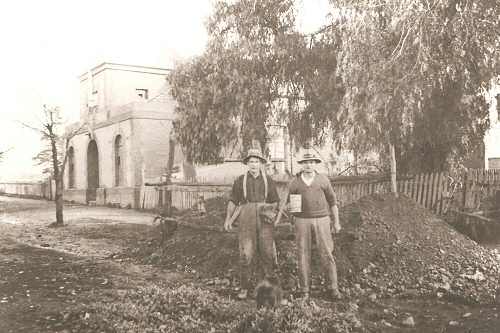
Mechanic's Institute Hall
Photograph courtesy of Val and Jason LaMacchia
The hall was built in 1913, when Ezekiel Hewitt was President of the Mechanic’s Institute. He laid the foundation stone (shown below). Ezekiel was a bricklayer, as was his son Frank, who left Wedderburn for the war in 1914 with Albert Jacka and two others. Frank was a Lance Corporal on 8 August, 1915, when the 14th Battalion was caught on one of the approaches to Hill 971 at Gallipoli and decimated by Turkish machineguns. In his will, signed on 25 April, 1915, he had assigned his possessions to his father.
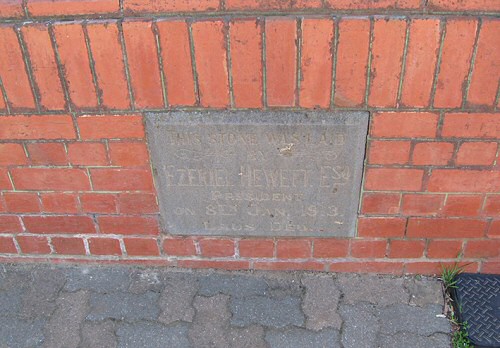
On 29 October, 1919, Captain Albert Jacka VC, and several other soldiers from Wedderburn were awarded medals on the stage of the Mechanic’s Institute Hall (shown below). Albert Jacka’s medal was a Bendigo gold replica of his Victoria Cross, presented by Mr. Edmund Jowett, MHR.
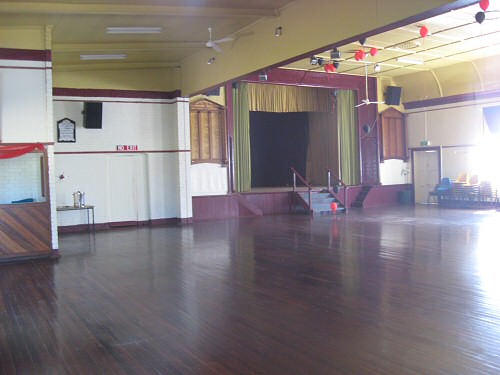
Since the days of Albert Jacka, the Mechanic’s Institute has had additions to expand its capacity, but the right hand side of the hall is in its original state.
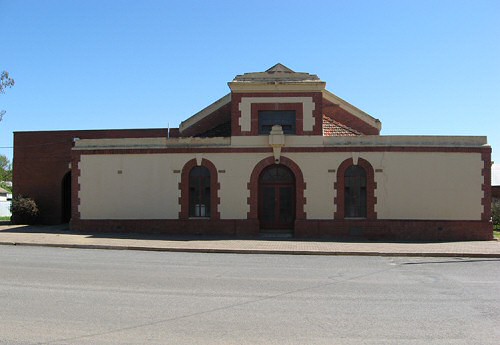
2. Korong Flour Mill and ‘Jacka Park’
The Korong Mill was established some years before 1888 as a stone mill. In the photograph below its chimney can be seen on the left of the main street, where three young boys were standing in 1908. It was destroyed by fire on March 6th, 1919.
Photo currently unavailable
The site of the Korong Flour Mill is now occupied by Soldiers Memorial Park, which is now known as ‘Jacka Park.’
The Soldiers’ Memorial was opened on Anzac Day 1921 by the ‘Queen of Queens’ Miss Winnie Guthrie.
The Jacka Memorial Gates were opened on 6 April 1958 in the presence of 2,500 people. The 14th Battalion (Jacka’s Mob) was represented by 30 of its veterans who with members of the RSL marched from the Shire Office to the park led by the Wedderburn Brass Band and the Pyramid Hill pipe Band. Captain Beamond MC unveiled the gates and the 14th Battalion’s Padre, the Very Rev. Sir Francis Rolland MC, CMG, OBE, MA dedicated the gates.
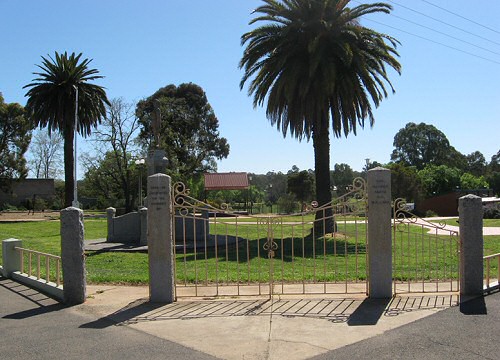
3. Wedderburn Primary School
The main building of Wedderburn Primary School has hardly changed since Albert Jacka and his brothers attended.
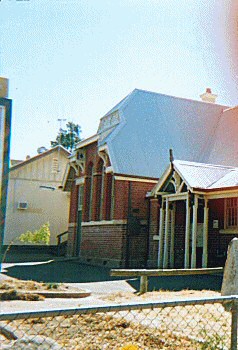
4. Trinity Anglican church
Albert Jacka was christened at the Trinity Anglican church in Wedderburn on 28 June, 1897, when he was already four years old.
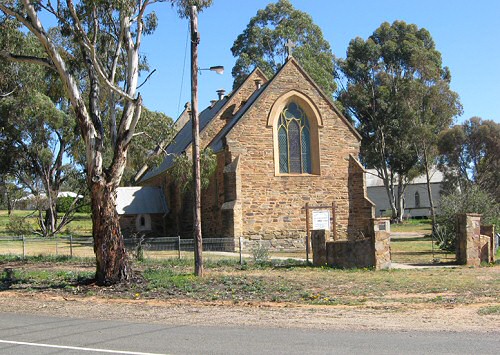
5. Kerr St. home of Isaiah and Fanny (nee Jacka) Olive
The original house of Isaiah and Fanny Olive in Kerr Street near the Anglican church has been demolished.
6. Godfrey Street home of Kettle family (Albert Jacka’s grandparents)
As young boys, Albert, Sid and Bill Jacka were playing in the street in front of their grandmother, Elizabeth Kettle’s house (shown below) when young Albert noticed that Dockley’s Hotel in the main street, and called out to his younger brothers: ‘Come on boys, let’s go have a look!’
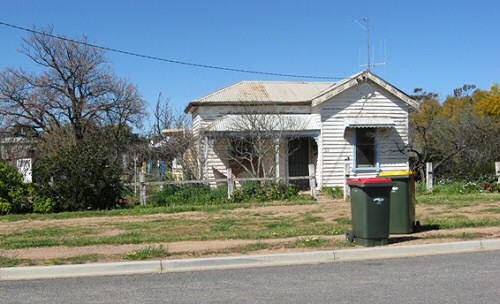
7. St Arnaud Road Guthrie house (rented by Nathaniel and Elizabeth Jacka)
Soon after arriving in Wedderburn from Layard (near Winchelsea) with his wife and young family, Nathaniel Jacka rented this house from Mr. Guthrie.
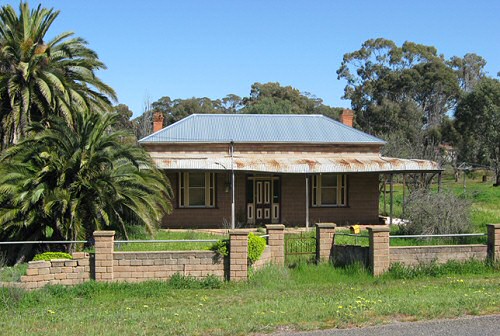
8. Ridge Street house (Nathaniel and Elizabeth Jacka residence)
Nathaniel and Elizabeth Jacka’s last house in Wedderburn was located in Ridge Street, between the railway line and the St Arnauds Road. The three bedroom house burnt down on 11 August, 1931. The block of land below is the site where the Jacka residence was located.
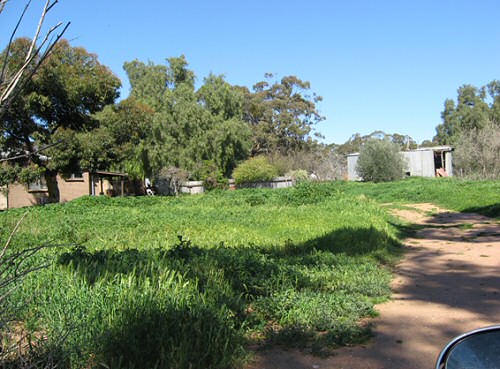
Apart from being a timber haulage contractor, Nathaniel Jacka engaged in some share farming. The property next door to the Jacka residence was used for farming and grazing Nathaniel’s horses.
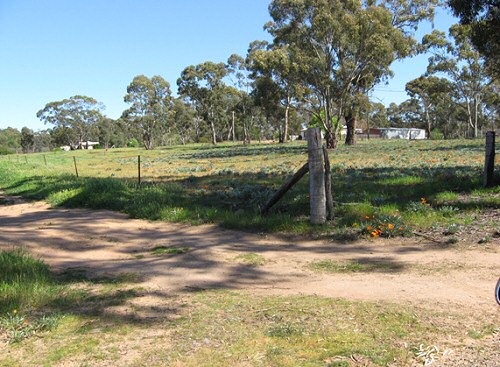
9. Wedderburn Railway station
The Wedderburn railway station in 1887. It was from this station that Albert Jacka and three others set out for the long journey to Gallipoli and the Great War. As spoken by Albert Jacka to the people of Wedderburn in 1919: “I remember five years ago, when I and three others were farewelled from Wedderburn. One of those has returned badly wounded, while the other two have their final resting place on the other side…”
The two who died were William Robert Earll, and Frank Hewett.
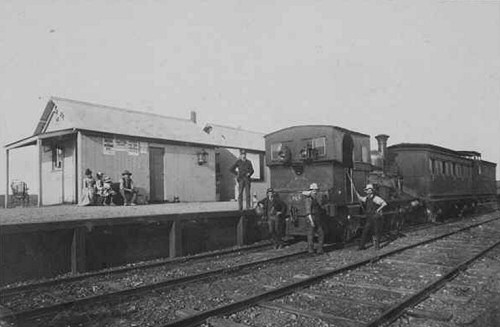
Photograph courtesy Museum Victoria
Wedderburn railway station 1887
In the mid 1920s Bill Jacka obtained a supernumerary position at the Weddereburn railway station, after having spent some time on a railway gang. He later became the Mayor of Footscray.
10. Korong Shire Office (now Historical Society)
Mr Campbell Holmes, Secretary of the Korong Historical Society in Wedderburn stands in front of the old Shire Hall, which now houses the Historical Society.
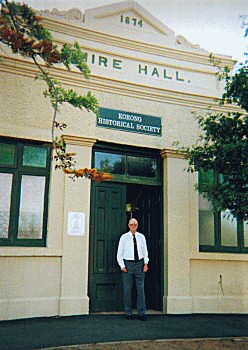
11. Sam Jacka’s butcher shop
Sam Jacka started his butcher shop in Wedderburn in 1924, but later moved to a dairy farm at Kilsyth.
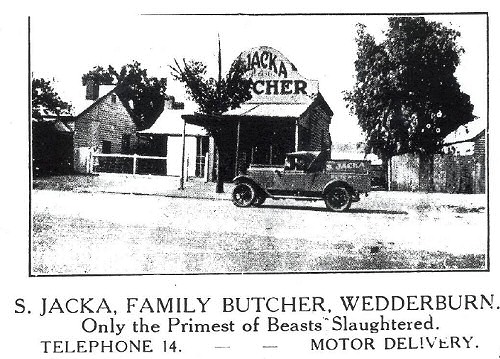
The photograph below shows the shop in Wedderburn as it looks today.
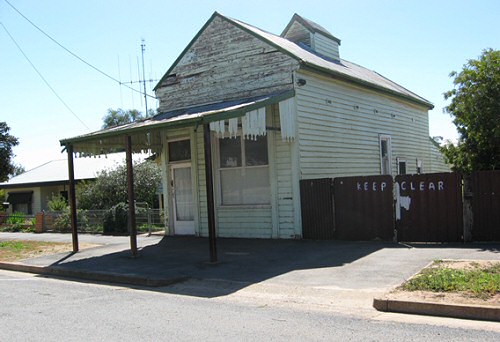
|
|
Copyright © 2010 Michael Lawriwsky
|
|